Climate Disasters on the Planet from April 12 to April 16, 2024: Summary
UAE
On April 16, the United Arab Emirates was hit by torrential rains that literally paralyzed life in Dubai, one of the most developed cities in the world.
More than 142 mm of rain fell in Dubai in a 24-hour period, despite the fact that the average monthly norm for April here is only 7.6 mm.
Streams of water rapidly flooded homes, stores and enterprises. One of the largest shopping and entertainment centers in the world, Dubai Mall, temporarily turned into the world's largest indoor swimming pool.
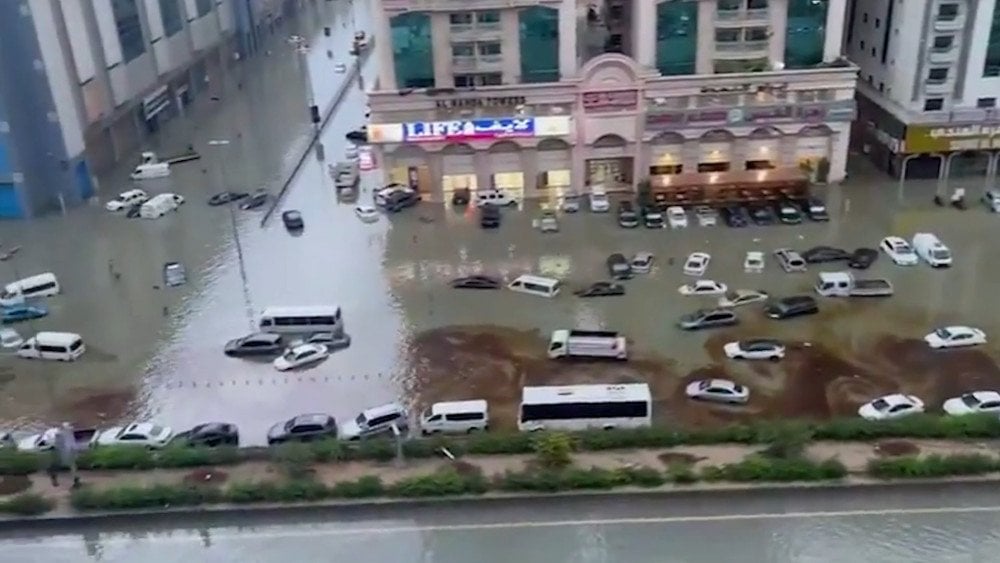
Historic flooding in Dubai, UAE
The severe weather conditions led to numerous vehicle breakdowns as drivers were forced to travel on roads that quickly became like rivers. Many drivers had to abandon their cars right in the middle of the highways and flee waist-deep in water.
In addition, the downpours were accompanied by deafening thunder and lightning, as well as hail that damaged vehicle windshields. Power outages occurred in some residential areas. Powerful winds swept furniture off the balconies.

Strong wind sweeps furniture off balconies, Dubai, UAE
The rain disrupted the work of elevators in skyscrapers. One of the city residents reported that she had to walk up to the 27th floor for 45 minutes, and when she got home, there was no electricity, phone service or Internet connection.

Flooded airport in Dubai, UAE
At Dubai Airport, one of the world's busiest air hubs, the runways were submerged under water. Large jet planes looked more like ships navigating through sea waves than airplanes.
According to FlightAware, 62 flights were canceled and more than 600 delayed on Tuesday, April 16. Emirates airline stopped checking in passengers departing from the international airport until at least midnight on April 17, due to extreme weather conditions. Long lines of cabs formed on the roads to the airport, and thousands of passengers crowded around the airport, most of them sleeping on chairs or on the floor, as they waited for their delayed flights. A statement appeared on social media at Dubai Airport on the morning of April 17: “We advise you NOT to come to the airport, unless absolutely necessary. Flights continue to be delayed and diverted.”
The traffic collapse in the city caused people to spend the night where the storm hit them: in the subway and flooded shopping malls, where people slept on tables in the food courts.
Like the rest of the United Arab Emirates, Dubai has a hot and dry climate. Rainfall is extremely rare, and the city's infrastructure is not designed to handle the amounts of water that municipal services had to deal with.
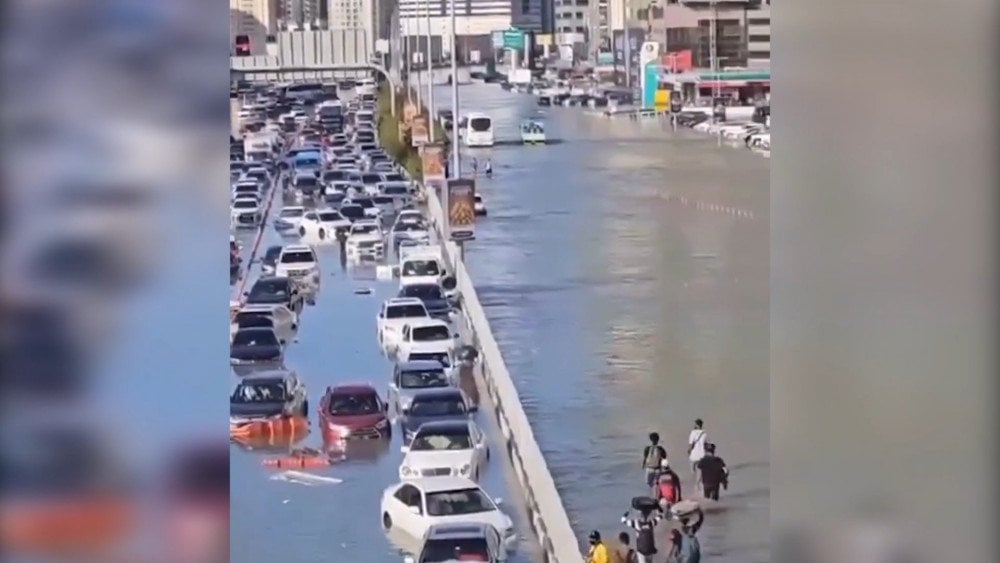
Aftermath of flooding in UAE
People on social media have linked such anomalous rainfall to a cloud seeding operations, which are often carried out in the country in recent years to increase rainfall.
However, the UAE's National Center of Meteorology claimed that artificial cloud seeding can cause rain, but not of such scale as to cause this much flooding.
The largest amount of rain — 254.8 mm — was recorded in the city of Al Ain, Abu Dhabi emirate. This equates to as much as 5 times the annual norm (48 mm) of rainfall!
The National Center for Meteorology confirmed that the record rainfall in the country within 24 hours is an exceptional event in the country's climatology records for the entire 75 years since the beginning of climate data recording.
Oman
Since April 14, heavy rains with thunderstorms have caused widespread flooding in many provinces of the Omani Sultanate. The disaster caused severe damage to property and disrupted electricity and communication networks. Roads and infrastructure were damaged; business and educational activities were suspended.

Major floods in Oman
Marmul Airport received 64 mm of precipitation in 24 hours. This is twice as much as what usually falls here in an entire year (31.7 mm)! In the streets of the country, floodwaters swept away people and cars. The death toll has already reached 20, but rescuers are still finding the bodies of those who died in the floods.
Crews from the Royal Oman Police (ROP) and the Civil Defense and Ambulance Authority of Oman (CDAA) have conducted multiple operations to rescue people trapped by floodwaters in their cars or swept away by the rushing floods. Nearly 35 people who were stranded in the Ibra wilayah were rescued. Twenty-one people were also rescued from a flooded school bus in the city of Nizwa.

Evacuation of people from a flooded school building, North Ash Sharqiyah Governorate, Oman
In another rescue operation, 1,200 people were evacuated from a school surrounded by water in the Al-Mudhaibi district, North Ash Sharqiyah Governorate.
Pakistan
Pakistan has been struck by deadly storms since April 12. Heavy rains, hail and numerous lightning storms have hit residents of several provinces of the country.
In just one week, at least 71 people have already been killed and dozens injured in Pakistan. Most of the deaths were caused by landslides, house collapses and lightning strikes.
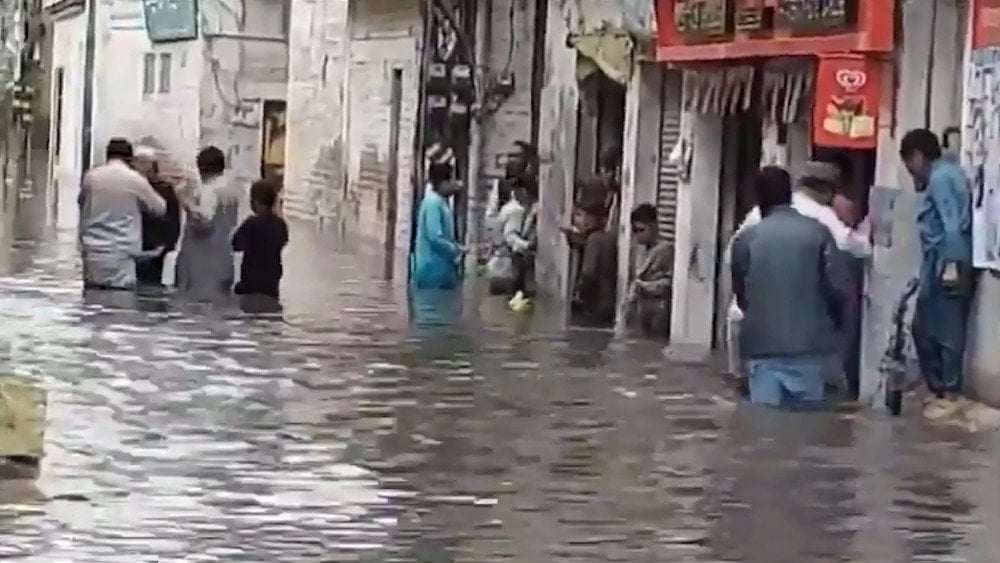
Aftermath of heavy rains in Pakistan
Severe weather disrupted transportation between some rural areas, resulting in serious problems for local residents.
Khyber Pakhtunkhwa province was particularly affected, with as many as 1,370 houses damaged.

Powerful torrents of rainwater in Balochistan province, Pakistan
The provincial government of Balochistan declared an emergency on April 15, as rainfall since the beginning of the month has greatly exceeded the norm.
“Balochistan has received 353% more rainfall than normal this month,” said Zaheer Ahmed Babar, a senior official at the Pakistan Meteorological Department.
Afghanistan
In neighboring Afghanistan, snowfalls, heavy rains and flash floods damaged mosques, schools and more than 2,000 houses. 25,000 hectares of farmland were damaged and 2,500 animals died.
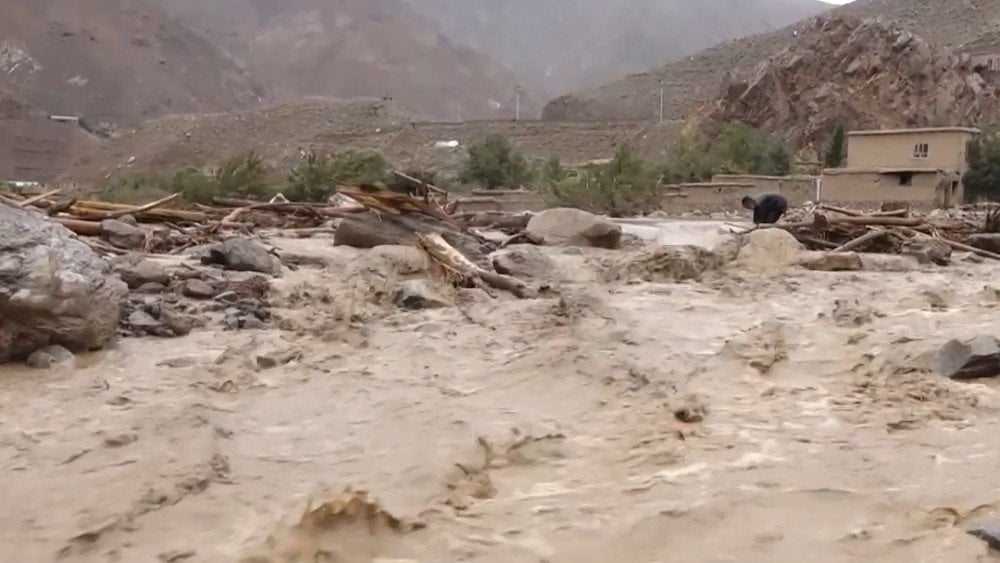
Large-scale flooding in Afghanistan
It should be noted that the heavy rains in Afghanistan came right after an anomalous winter drought, which even forced farmers to postpone the spring sowing.
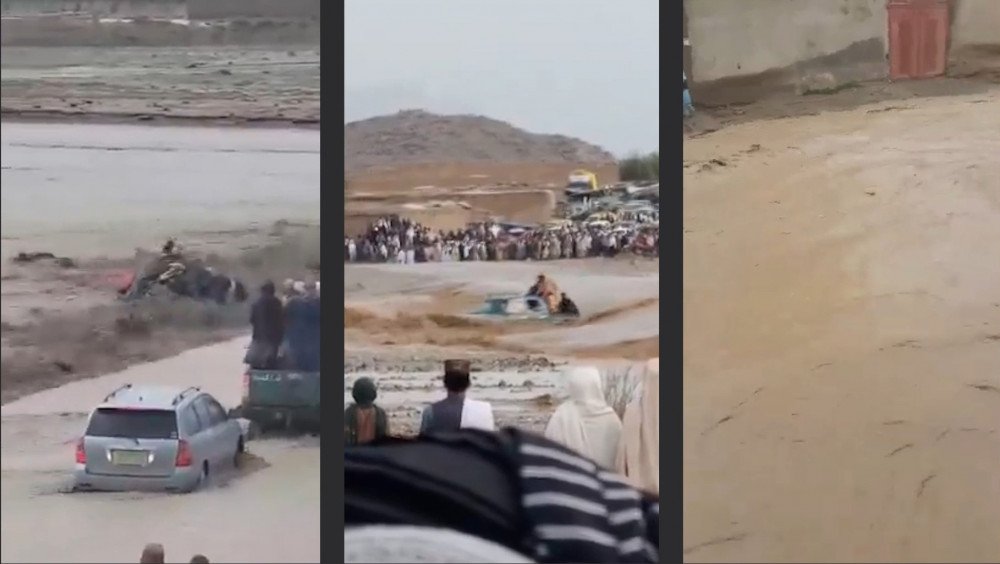
Aftermath of heavy rains in Afghanistan
This climate disaster has affected thousands of people in 20 of the country's 34 provinces. At least 70 people died, most due to roof collapses.
Iran
A wave of anomalous rains also swept across Iran.
In the southeast of the country, heavy rains caused rivers to overflow and triggered widespread flooding.

Aftermath of overflowing rivers in southeastern Iran
Iran's Meteorological Organization has issued a “red warning” for flooding in five provinces — Hormozgan, Fars, Sistan and Baluchistan, Kerman, Bushir.
60 roads were closed to traffic. Residents of Sistan and Baluchestan province have not yet recovered from the March floods and are again faced with this natural disaster.

Floodwaters have blocked roads
8 people have died, 1 is missing.
Russia
On April 13, the Republic of Kabardino-Balkaria was hit by a storm with squally winds, heavy rain and hail. In the city of Nalchik, the weather apocalypse covered the streets with a thick layer of hail with drifts reaching over a meter in height. The streets became much like rivers. In the city's lowland part, the basements of private houses were flooded. Window panes in some buildings were smashed.

Aftermath of a hail storm in Nalchik, Republic of Kabardino-Balkaria, Russia
This weather took city dwellers by surprise. Pedestrians on the streets fell waist-deep into icy mud; long traffic jams formed on the roads. Local residents said it was really scary, as Nalchik had never faced anything like it before.
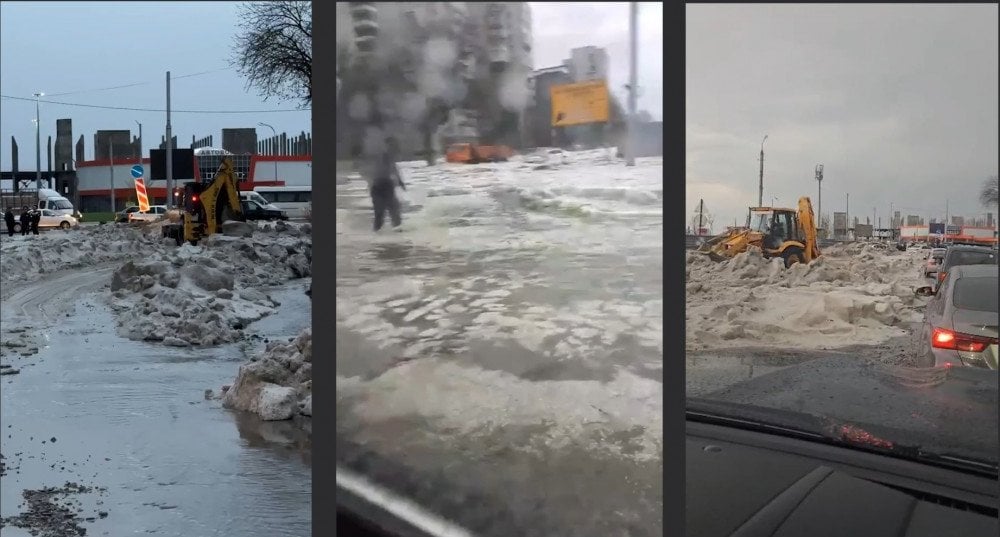
Hail drifts on the streets of Nalchik, Republic of Kabardino-Balkaria, Russia
On April 15, a resident of Gukovo farm in Krasnosulinsky district in the Rostov region spotted a huge sinkhole. A deep hole appeared right in the middle of the field where his farm machines were working. According to the eyewitness, the bottom of the sinkhole could not be seen, even when standing at its very edge.

A sinkhole in the Rostov region, Russia
Local residents fear that their homes may also be buried in sinkholes.
China
This is the first time in history that China has seen so many dangerous weather events at the same time.
On April 14, the temperature rose to 43.1 °C in Yunnan Province, breaking the national record for April.
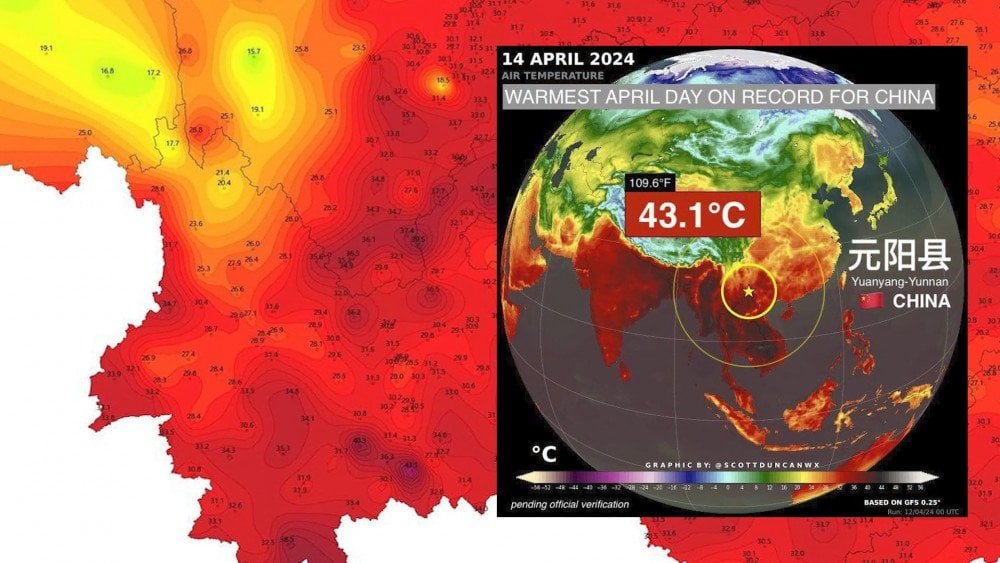
The highest temperature in April ever recorded in the country, Yunnan Province, China
Shaanxi province experienced snowfall.

Off-season snow in Shaanxi Province, China
Several provinces of the country — Hebei, Gansu, Inner Mongolia, as well as Beijing and Tianjin municipality were hit by a dust storm, while the north of China was hit by devastating tornadoes.
On April 12, the country's first tornado since the beginning of the year formed in the Tongliao district, Inner Mongolia province, after an uncommon for this season 30-degree heatwave.
On April 16, residents of Huairen in Shuozhou County, Shaanxi Province, spotted a tornado and posted the video on social media.
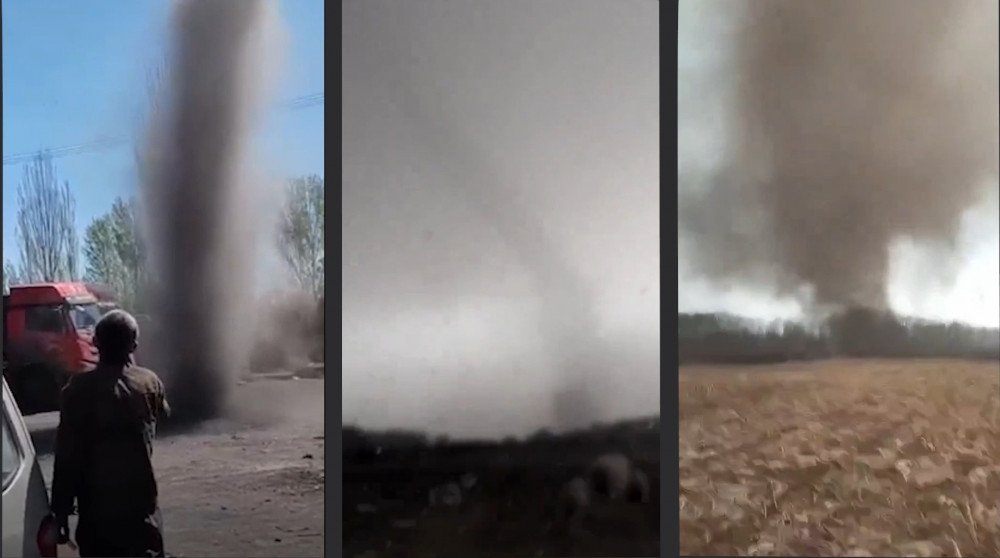
Destructive tornadoes in Inner Mongolia and Shaanxi provinces, China
The tornado lasted one or two minutes. Fortunately, there were no casualties.
At the same time, the city of Fuzhou in Jiangxi Province was hit by a convective storm. On the morning of April 16, the sky there suddenly darkened, turning day into night, and the city was hit by a thunderstorm with heavy rain and violent winds. The storm left devastation and chaos in the streets: uprooted trees were everywhere, roads were covered with broken branches and leaves.
Wind gusts reached 35.9 m/s, which can be compared to the strength of a typhoon that made landfall. This was a new record for the region.
USA
On April 13 in Pittsburgh, Pennsylvania, 26 barges broke loose from a tugboat, striking one bridge and damaging a marina and boats. Record rainfall on the previous day caused the water level in the Ohio River to rise.

Rising water levels in the Ohio River, Pittsburgh, Pennsylvania, USA
The water literally carried the barges, even though 23 of them were loaded with coal, fertilizers and other dry cargos. One of the barges likely sank. While the search for it continued, two bridges had to be closed and navigation on a sector of the river was halted.
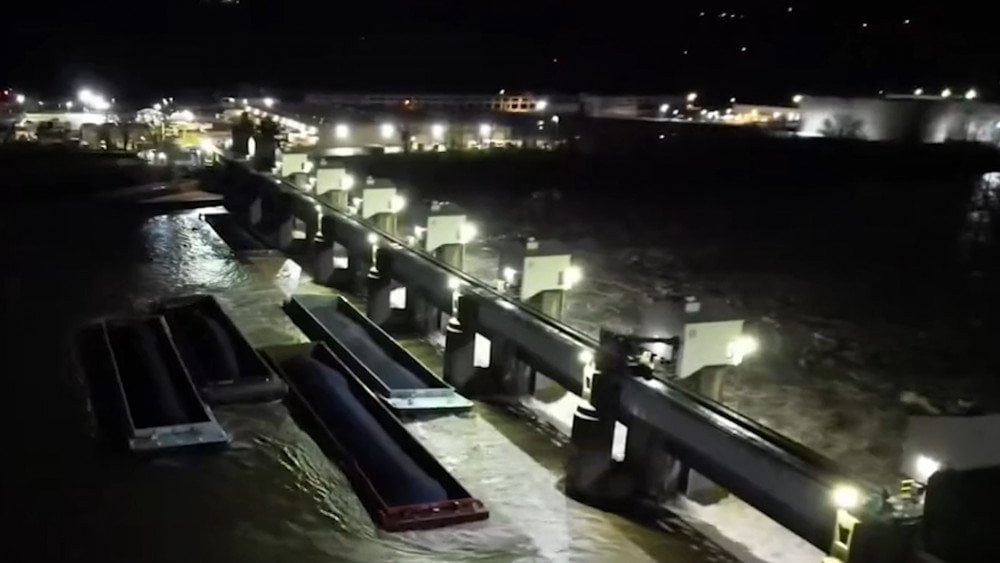
Barges that broke away from a tugboat hit the bridge, Pittsburgh, Pennsylvania, USA
The barges sank dozens of dinghies at the Branchport Boat Club and also caused extensive damage to a private marina.
Indonesia
On April 16, a major eruption of the Ruang volcano began, located about 100 km from the capital city of Manado in the province of North Sulawesi.
The volcano ejected streams of red-hot lava, and a column of ash rose into the sky to a height of 2 km. The eruption topped off with bursts and thousands of volcanic lightning strikes.
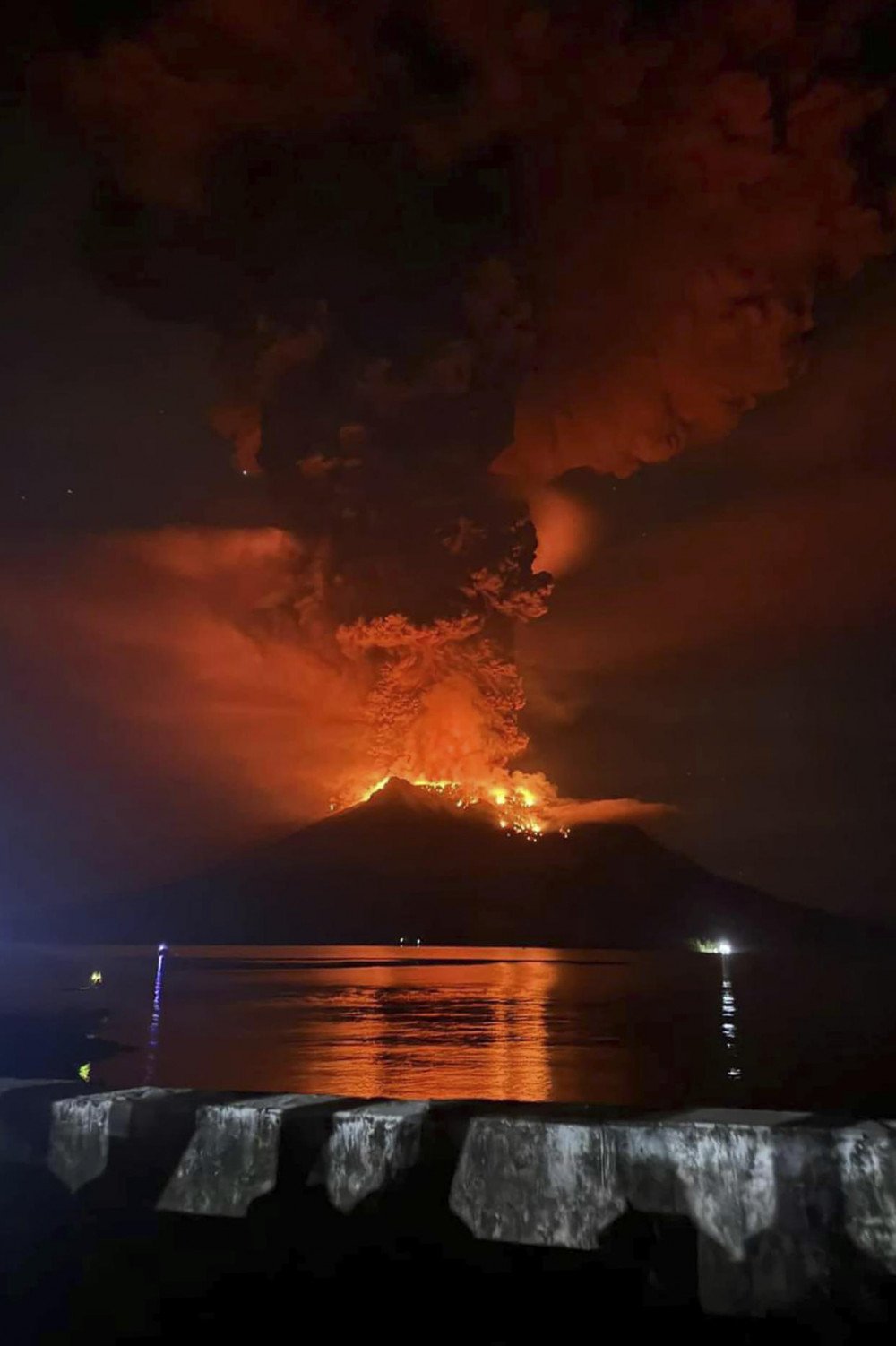
Ruang volcano eruption, Indonesia
In the next two days, the volcano's activity increased and it spewed ash to a height of 13.5 kilometers, causing a temporary halt in air travel.
The warning level was raised to the maximum. The evacuation of 11,000 people in the surrounding area began. Some people panicked and tried to flee on their own in rubber boats.
In Sitaro County, the eruption of Ruang volcano caused “volcanic ash rain” accompanied by flying hot rocks. Several coastal residents were injured.
The volcano's eruption was preceded by more than 1,000 earthquakes. Authorities are worried that part of the mountain could collapse into the sea and cause a tsunami.
At this moment, the planet is experiencing events that occur only once every 12,000 years. This cyclicity is caused by cosmic influence. However, in this cycle, due to human tampering with the planet's ecosystem, the Earth is now facing a global catastrophe, after which life on our planet will become impossible.
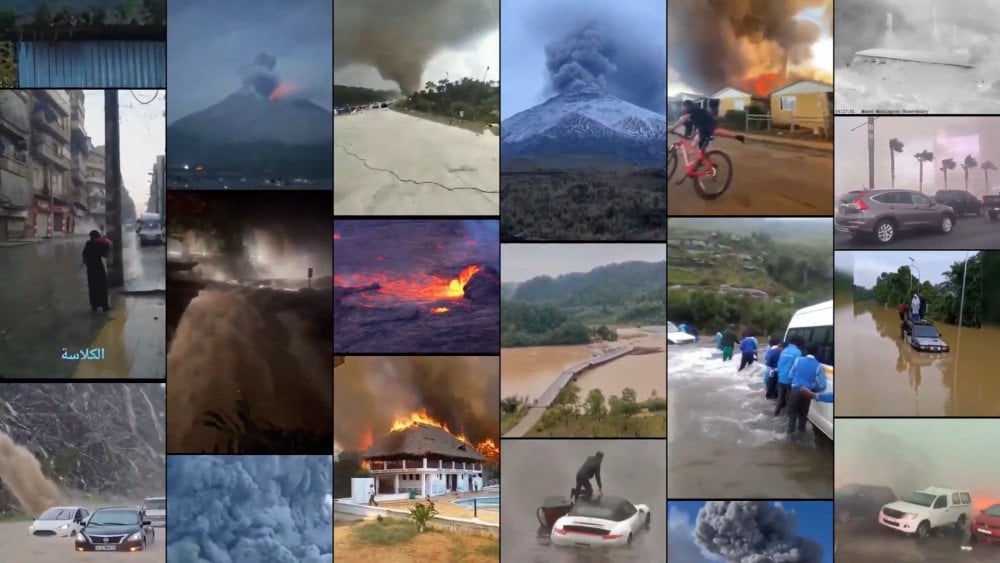
Large-scale climate disasters occurring on Earth every 12,000 years
In order to avoid a negative scenario, people must know and understand what is going on. This is why it is so important to provide information about what is happening. The more people see the picture holistically, the bigger the chances are that they will take action.
Thanks to the work of scientists and the volunteers who help them, we now have the answer to the questions: what's happening, why, what awaits us and how we can avoid the calamity.
All of this information is presented in a series of forums “Global Crisis”.
Now, more than ever, it is important to speak with a united public voice that conveys the truth to the rest of the world. Then, together we can solve the global problem faced by humanity.
Watch the video version of this article here:
Leave a comment